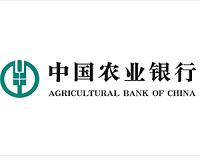 |
Washington DC (SPX) Jul 06, 2010 U.S. farmers are under pressure to produce more, pollute less, fulfill consumer preferences, and make a living - all with increasingly scarce natural resources and the uncertain effects of climate change, says a new report from the National Research Council. To help U.S. agriculture evolve to meet these demands, the report concludes, national agricultural policies and research programs should look beyond focusing only on low costs and high production and adopt a holistic perspective to farming that encompasses multiple end goals. "Although farming productivity has increased, nowadays farmers are being asked to do more than produce more food for a growing world population," said Julia Kornegay, chair of the committee that wrote the report, and professor and head of the department of horticultural science at North Carolina State University, Raleigh. "Many modern agricultural practices have unintended negative consequences, such as decreased water and air quality, and farmers have to consider these consequences while trying to increase production. If farmers are going to meet future demands, the U.S. agriculture system has to evolve to become sustainable and think broadly - past the bottom line of producing the most possible." Farmers in the United States have become more efficient producers. For instance, in 2008 farm output was 158 percent higher than it was in 1948, and farmers today are producing more food with less energy per unit output than 50 years ago. However, U.S. agriculture has external costs that are mostly unaccounted for in productivity measurements, the report says. For example, water tables have declined markedly in some agricultural areas, and pollution from nitrogen and phosphorus in fertilizers and pesticides have infiltrated surface water and rivers, creating oxygen-starved zones in waterways. The agricultural sector also is the largest contributor of two greenhouse gases, nitrous oxide and methane, in the United States. Additionally, the committee found that farmers face other challenges, such as consumer concerns about the treatment of farm animals and food safety. Farmers' income is also not keeping up with rising production costs, primarily due to the higher prices of external inputs such as seeds, fuel, and synthetic fertilizer. More than half of U.S. farm operators work off the farm to supplement their income and to obtain health care and retirement benefit plans. To help achieve a sustainable agriculture system that looks beyond the end goal of providing more goods, the committee identified four goals that should be considered simultaneously: + satisfy human food, fiber, and feed requirements, and contribute to biofuels needs + enhance environmental quality and the resource base + maintain the economic viability of agriculture + improve the quality of life for farmers, farm workers, and society as a whole The committee emphasized that achieving a balance of the four goals, and creating systems that can adapt to fluctuating conditions, are hallmarks of greater sustainability. Achieving the goals will require long-term research, education, outreach, and experimentation by the public and private sectors in partnership with farmers. Moreover, two parallel and overlapping approaches - one incremental and one transformative - could help meet these goals, the committee proposed. The incremental approach would expand ongoing endeavors to create farming practices that improve sustainability, regardless of size or type of farming system. The transformative approach would bring together multiple disciplines of research to identify and design a vision for a balanced agricultural system. Although the report lays out a framework toward attaining sustainable farming systems, the report stresses that farmers' decisions to employ new practices are influenced by external forces, such as science, markets, public policies, land tenure arrangements, and their own values, knowledge, skills, and resources. The committee said that efforts to promote widespread adoption of different farming practices and systems would require knowing how individual, household, farm, and regional characteristics affect farmers' response to incentives and disincentives.
Share This Article With Planet Earth
Related Links National Academy of Sciences Farming Today - Suppliers and Technology
 AgBank draws 30 billion yuan from key investors: media
AgBank draws 30 billion yuan from key investors: mediaShanghai (AFP) July 2, 2010 Agricultural Bank of China attracted more than 30 billion yuan (4.4 billion dollars) from key domestic institutions as it opened A-share subscriptions in Shanghai, state media said Friday. AgBank, which plans to raise 23.2 billion dollars in what would be a world-record initial public offering in Shanghai and Hong Kong, started taking orders from institutional investors on Thursday. The ... read more |
|
| The content herein, unless otherwise known to be public domain, are Copyright 1995-2010 - SpaceDaily. AFP and UPI Wire Stories are copyright Agence France-Presse and United Press International. ESA Portal Reports are copyright European Space Agency. All NASA sourced material is public domain. Additional copyrights may apply in whole or part to other bona fide parties. Advertising does not imply endorsement,agreement or approval of any opinions, statements or information provided by SpaceDaily on any Web page published or hosted by SpaceDaily. Privacy Statement |